Various
Various
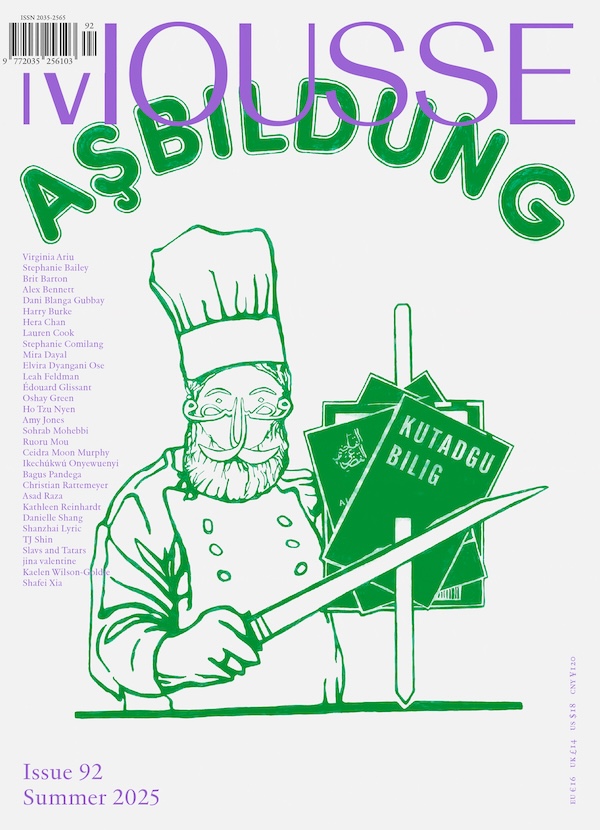
Mousse #92
Regions surface often in this issue—across arts, tales, and gatherings of individuals and meanings—as a possibility to bypass the borders of nation-states and the meta-geographies of colonial modernity.
Slavs and Tatars; Hera Chan on Stephanie Comilang; Stephanie Bailey on Ho Tzu Nyen; Drifting into the Atmospheric by Sohrab Mohebbi; Lauren Cook contributes nine newly commissioned note-like fiction pieces; Asad Raza on Édouard Glissant; Mira Dayal in conversation with Shanzhai Lyric, TJ Shin, and jina valentine; Temporary Communities, Four Points on Radically Public Institutions by Elvira Dyangani Ose; A Signature Truer Than the Name by Dani Blanga Gubbay; tidbits: Ruoru Mou by Amy Jones; Virginia Ariu by Brit Barton; Bagus Pandega by Harry Burke; Ceidra Moon Murphy by Alex Bennett; Oshay Green by Ikechúkwú Onyewuenyi; Shafei Xia in conversation with Danielle Shang; books by Christian Rattemeyer; Guest Design: Lamm & Kirch.
This issue comes with different covers, randomly distributed.
Mousse is a bimonthly contemporary art magazine. Established in 2006, Mousse contains interviews, conversations, and essays by some of the most important figures in international criticism, visual arts, and curating today, alternated with a series of distinctive articles in a unique tabloid format.
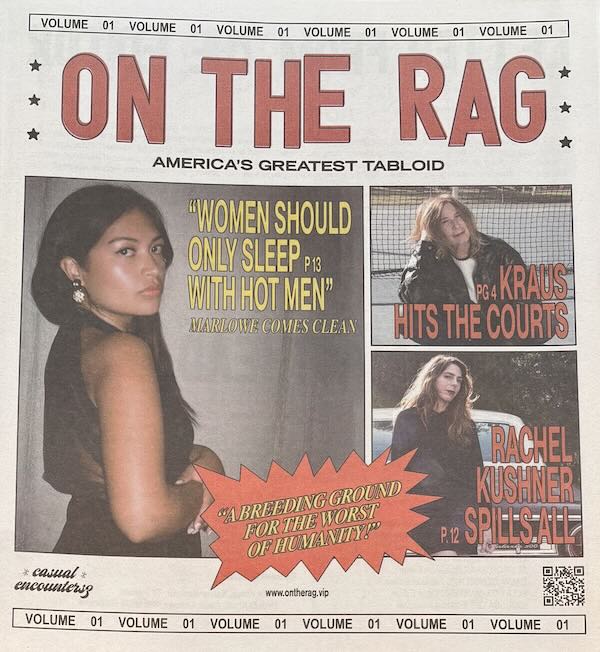
On The Rag
Casual Encountersz presents On The Rag, America’s Greatest Tabloid. Blending art and literature with sex, slime and sleaze, On The Rag emerges from LA's underground reading series Casual Encountersz to create a new media platform where the Ivory Tower and the gutter collide. On The Rag is a literary journal, gossip mag and conceptual art project all in one. Get off the apps…And get On The Rag!

Artistes typographes
Artistes typographes (Artists as typographers) is a visual corpus that brings together one hundred and thirty-two artists' books collected and reproduced as part of an artistic residency conducted at the Centre des livres d'artistes (Saint-Yrieix-la-Perche). This compilation of images demonstrate the interest of some figures of the art field for the substances of the book object. They show singular compositions and other typographic details: handwritten letters, character designs, stamps, logotypes.
Featuring Jean-Michel Alberola, John Baldessari, Christian Boltanski, Jean-François Bory, Broutin, Pol Bury, Philippe Cazal, Ulises Carrión, Henri Chopin, Claude Closky, Joëlle de la Casinière, herman de vries, Hamish Fulton, Jochen Gerz, Raoul Hausmann, Simone Forti, Paul-Armand Gette, Dick Higgins, Isidore Isou, Joseph Kosuth, Edmund Kuppel, La Monte Young, Pascal Le Coq, Jean Le Gac, Lefevre Jean Claude, Claude Lévêque, Mario Merz, Annette Messager, Jean-Claude Moineau, Matt Mullican, Maurizio Nannucci, Clemente Padín, Dieter Roth, Claude Rutault, Seth Siegelaub, Roman Signer, Harald Szeemann, Ernest T., Ben Vautier, Bernard Villers, Wolf Vostell, Martha Wilson...

Forgive Us Our Trespasses
The Forgive Us Our Trespasses Reader explores radical and emancipatory significations and fabulations of trespassing, turning towards practices that transgress and reshape the boundaries of, among other dimensions, currency, governance, religion, spirituality, language, and artificial intelligence.
Complementing the thematic concerns of the exhibition of the same name, this collection of essays, poems, artistic contributions, and a sermon, conceptually maps the distance between the English word "trespasses"—with its double meaning of to sin or to physically tread—and the German word "Schuld"—referring to sin and guilt but with etymological proximities to debt (Schulden). Deviating from the line of prayer that lends the project its name, the contributors do not ask for forgiveness for the various trespasses they elucidate—be they religious, social, class-related, national, sexual, or disciplinary in nature—but rather assert them as modes of transgression, as forms of rebellion, and as possibilities for transcendence.
Published on the occasion of the eponymous exhibition at Haus der Kulturen der Welt, Berlin, in 2024.
Contributions by Victoria Adukwei Bulley, Egidija Čiricaitė, Yásnaya Elena Aguilar Gil, Toussaint M. Kafarhire, Mansour Ciss Kanakassy, Chao Tayiana Maina, Bonaventure Soh Bejeng Ndikung, Tavia Nyong’o, Mary Louise Pratt, Josefine Rauch, Deborah A. Thomas, Senthuran Varatharajah, Yuanwen Zhong.
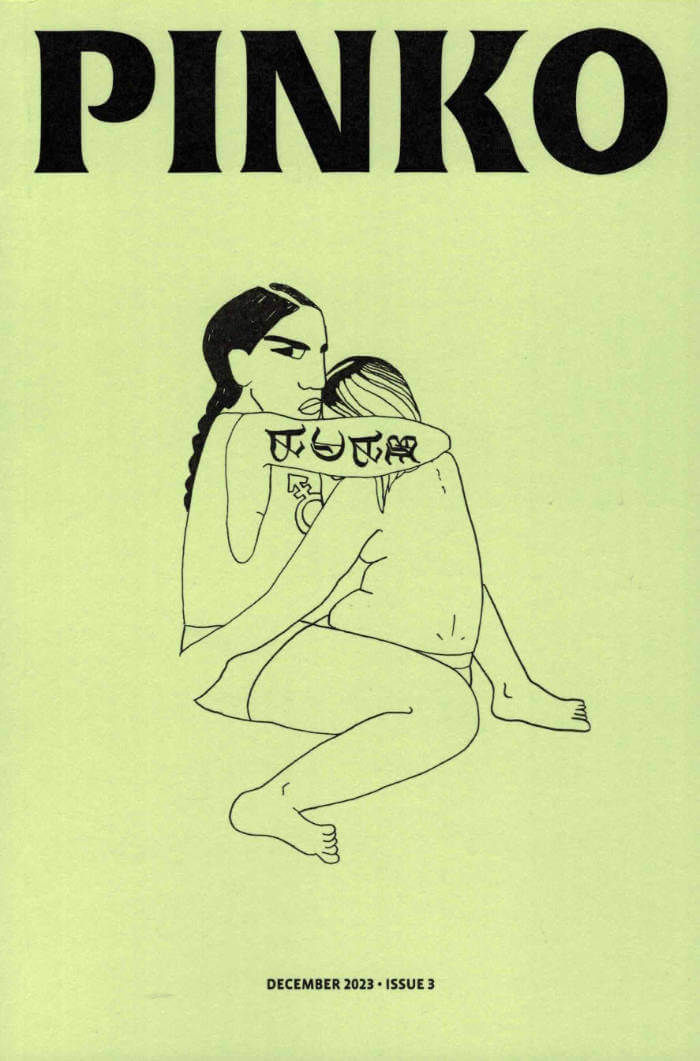
Pinko Magazine Issue 3
This third print issue contains Pinko's editorials on trans eradication and Palestinian survival, essays about black lesbian sex writing, consent and its limits, the end of sexual liberalism, and a presentation of imbrication theory, plus a roundtable on political violence, an interview from Pinko's book After Accountability, and a memorial to the gay socialist publisher Jeffrey Escoffier. Illustrations by the artist KT Pe Benito grace this issue.

Pinko Magazine Issue 2
This second print issue contains an interview with the abolitionist organizer Stevie Wilson, essays about nineties nightlife in support of queer intimacies in Santiago, Chile, Barbz against pinkwashing, a translation of the communization theorist Gilles Dauvé’s latest work on the reactionary tendencies in the sexual liberation movement in Weimar Germany, a missive by Samuel R. Delany, a ritual script by Lou Cornum, a meditation on intersex experiences as the untheorized marrow of trans liberation, and more. There are also world-building drawings by the artist Chitra Ganesh throughout.
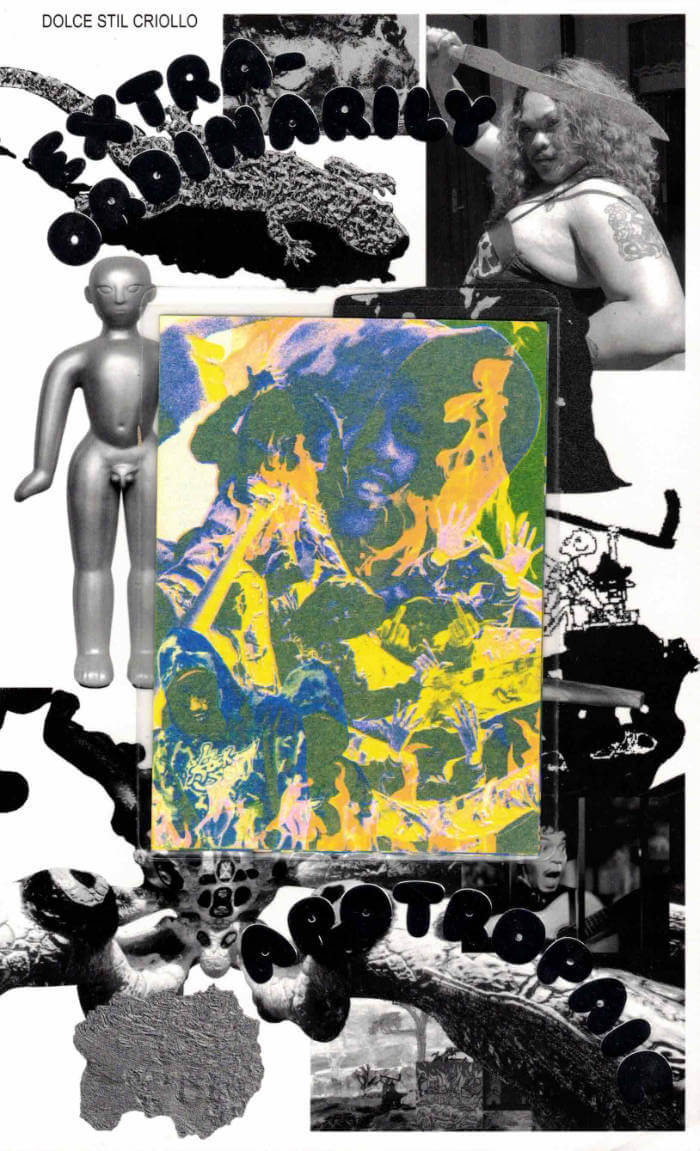
Dolce Stil Criollo Issue 5: Extraordinarily Apotropaic
Dolce Stil Criollo’s fifth issue, "Extraordinarily Apotropaic," aims to rethink reality in its current ordinary form by discovering and creating charms and rituals for changing it into one where there is less harm. The issue features poems in multiple languages; a map of dreams; a video game-turned-manga; a section that functions as a kineograph; a collaboration with the Huni Kuin people; and more. We also curated a collective project, “Cinema of Hope,” which brings together 11 moving image artists in search of the apotropaic moment, caught on film.
The cover of our fifth issue features one of five “santinho” inserts. Designed like prayer cards, they contain a collaged portrait of a musical artist (Pivaratu, Pivete Nobre, Iya, Swatch, Devil Gremory) on the recto and the rap lyrics they wrote in response to our theme on the verso.
Contributors include Andrés-Monzón Aguirre, Aykan Safoğlu, Azul Caballero Adams, Belinda Zhawi, Daniel Machado, Daniel Moura, Devil Gremory, Enorê, Esvin Alarcón Lam, Gabriel Massan, Hick Duarte, Itamar Alves, Iya, Jennifer Pérez, Jesse Cohen, Johan Mijail, Juan Pablo Villegas, Kasra Jallilipour, Kent Chan, Keratuma (Mileidy Domicó), Laura Huertas Millán, Lucía Melií, Lucía Reissig & Bernardo Zabalaga, Maria Thereza Alves, Masha Godovannaya, Mayada Ibrahim, Najlaa Eltom, NIna Djekić, Ophelia S. Chan, Pivaratu, Pivete Nobre, Ricardo Pinheiro (Ganso), Roberto Tejada, Sofía Córdova, Sofía Gallisá Muriente, Swatch, Thales Pessoa, and Thiago Martins de Melo.
Languages: Spanish, Portuguese, English, Japanese and Arabic
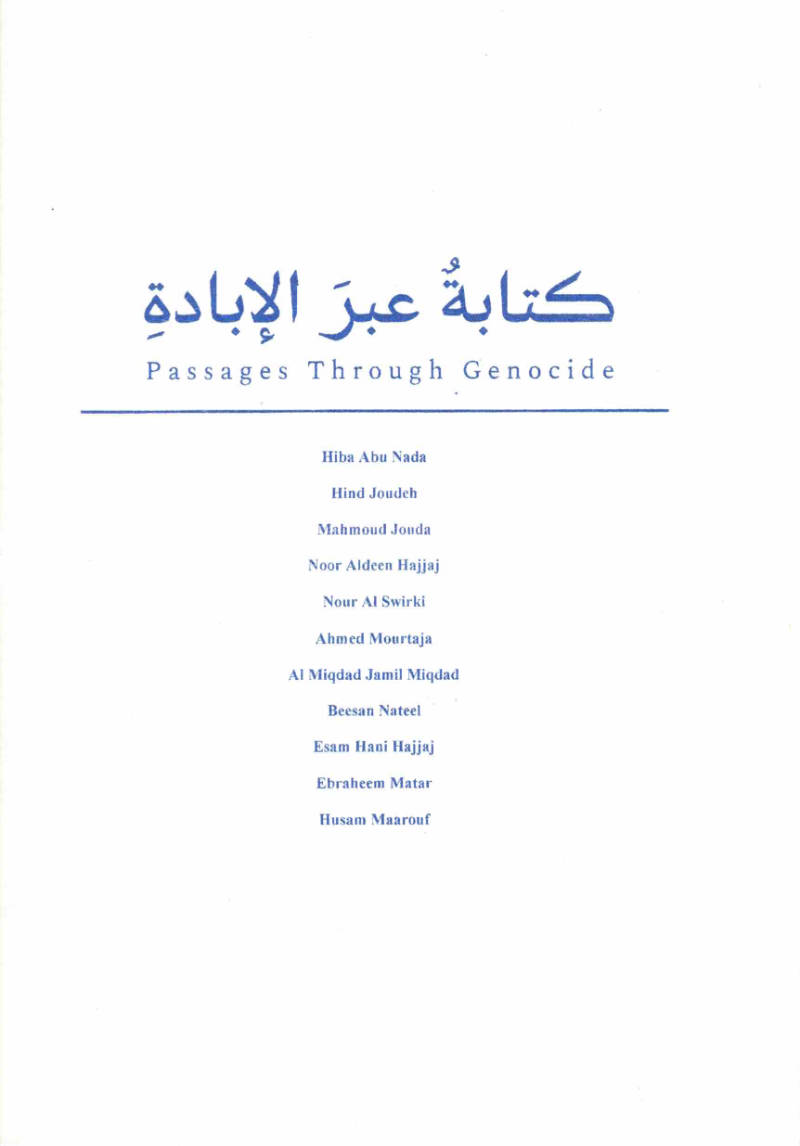
Passages Through Genocide
"We collect, translate and publish texts from Palestinian writers confronting the genocide in Gaza, to lift up their words. We urge you to share, print, publish and distribute these texts by all possible means, in support of Palestinian struggle for liberation. All volunteers in this project remain anonymous as a sign of respect and humility towards our people in Gaza. Any financial income generated from these texts is the property of the people in Gaza and must be directed back to them in full." - @gazapassages
Texts by:
Hiba Abu Nada
Hind Joudeh
Mahmoud Jouda
Noor Aldeen Hajjaj
Nour Al Swirki
Ahmed Mourtaja
Al Miqdad Jamil Miqdad
Beesan Nateel
Esam Hani Hajjaj
Ebraheem Matar
Husam Maarouf
All rights reserved to the people of Palestine
Printed by CUTT PRESS at Hopscotch Reading Room

Monsieur Dubois, dont on fait les flûtes
Imprimé par Élie Partouche à l'Association Presse Offset à Paris et sur internet. Couverture dessinée par Traduttore, tradiore, repiquée sur presse typographique par Grégorie Sourice à Marseille. Le tout relié au bar à bious. Une publication à l'initiative de Louka Butzbach et soutenue par le complexe bancaire Art Majeur, 2022.

Robida magazine n. 8 — Isola Otok Island
Robida 8 is imagined and organised as a journey, that can explore aspects of island life along a narrative thread, as if developing the structure of an epic voyage: from the Embarkation – where introductory perspectives on islands are offered –, then into the Departure – which considers the islands from afar, as conceptual entities –, through the Tempest – representative of the turmoils and movement that island stand for –, passing from the Strandedness – where the island coincides with stillness –, to finally approach the Homecoming, and the island as repository of collective as well as personal memory. The aim is for this journey to enrich our understanding of islands, as fertile ground for exploring what it means to inhabit a place.
Robida is a multilingual cultural magazine. It is published yearly by the association Robida which is based in Topolò, a village of twenty inhabitants on the border between Italy and Slovenia. The magazine explores different topics – such as abandonment, silence, the relation between domesticity and wildness, forest etc. – which are connected to the place where the magazine comes to life, namely Topolò. The eight issue reflects on the island which is explored through essays, photography, art projects, academic texts, interviews and personal written by authors from all over the world, from Argentina to Poland, from US to Slovenia.
Trilingual edition: Italian / Slovenian / English
Editorial board: Dora Ciccone, Maria Moschioni, Elena Rucli, Vida Rucli, Laura Savina, Aljaž Škrlep, Janja Šušnjar.
Contributors: Adele Dipasquale and Cristina Lavosi, Adriana Gallo, Agnieszka Dragon, Ajda Bračič, Alessandro Simone and Francesca Cassi, Alice Pedroletti and Alessandra Saviotti, Ana Escariz Péres, Anna Bierler, Anne Kathrin Müller, Antônio Frederico Lasalvia, Brechje Krah, Camilla Isola, Camilla Marrese and Gabriele Chiapparini, Chiara Alexandra Young, Chiara Dorbolò, Constanze Flamme, Deborah Mora, Dora Ciccone, Elena Rucli, Federica Carlotta Lai, Gabriele Zagaglia and Fernanda Villari, Giacomo Bianco, Giampaolo De Pietro, Giuditta Trani, Greta Biondi and Vittoria Rubini, Guglielmo Giomi, Haydée Touitou, Igor Martinig, Kaja Rakušček, Katrina Pelikan Bašelj, Laura Savina, Léna Lewis-King, Livia Galtieri, Ludivine Gragy, Ludovica Battista, make LARMO, Mara-Luna Brandt Corstius, Marcos Beccari, Margherita Falqui, Marie Ilse Bourlanges, Marie Kerkeling, Marta Marini and Cecilia Bima, Marta Marini and Francesca Matracchi, Mauro Tosarelli, Melissa Carnemolla, Mercedes Villalba, Ola Korbańska, Olya Korsun, Opher Thomson, Rachele Daminelli, Romane Bourgeois, Silvia Sfiligiotti, Siria Falleroni, Stefano Conti, Tanja Marmai, Titta C. Raccagni, Tymon Hogenelst and Jesse van der Ploeg, Valerija Intihar, Vidya Narine, William Belloche.

Responses to Derek Jarman’s Blue
Responses to Derek Jarman's Blue is the third publication in a series of anthologies from Pilot Press seeking contemporary responses to works of art made during the AIDS crisis.
In this third iteration, responses were sought to the 1993 film Blue by the multidisciplinary artist Derek Jarman.
Contributors
In order of appearance
Roelof Bakker
Jared Davis
Becca Albee
Linda Kemp
Ashleigh A. Allen
David Nash
Sam Moore
Anton Stuebner
Gonçalo Lamas
Olivia Laing
Nate Lippens
Jason Lipeles
JP Seabright
Andrew Cummings
Sig Olson
Maria Sledmere
Cleo Henry
Jessie McClaughlin
Lars Meijer
Scott Treleaven
Declan Wiffen
Caitlin Merrett King
Harry Agius
António Manso Preto
Adriana Lazarova
Brooke Palmieri
D Mortimer
Mary Manning
Aaron James Murphy
Printed on 100% recycled paper
Published by Pilot Press, 20 × 15 cm, Softcover, 2022
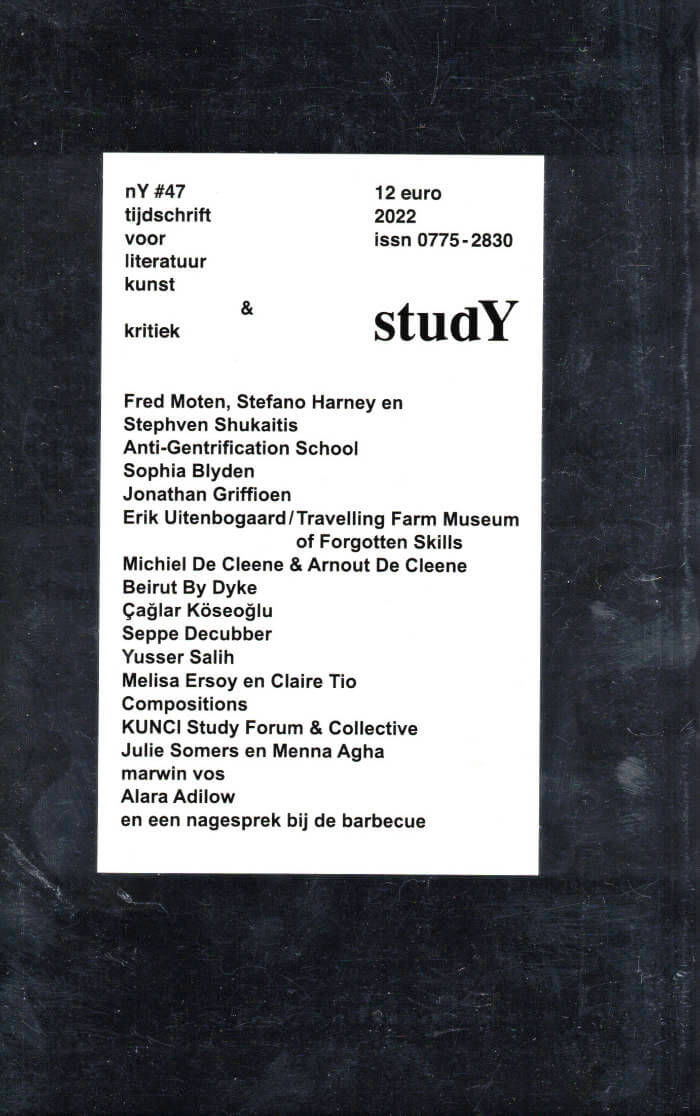
nY47 — studY
nY47 over studY verzamelt theoretische reflecties en praktijken rond of over study, geïnspireerd op het werk van Fred Moten en Stefano Harney. We vatten dit op als een praktijk van samenkomen om na te denken over wat je samen wilt leren, zonder dat hier een duidelijk einddoel aan verbonden is, zonder dat je er individueel punten voor of andere voordelen voor behaalt – zonder een instrumentele logica, kortom.
Redactie: Lietje Bauwens, Persis Bekkering, Hans Demeyer, Dagmar Bosma, Frank Keizer, Çağlar Köseoğlu, Julie Somers, Nadia de Vries.
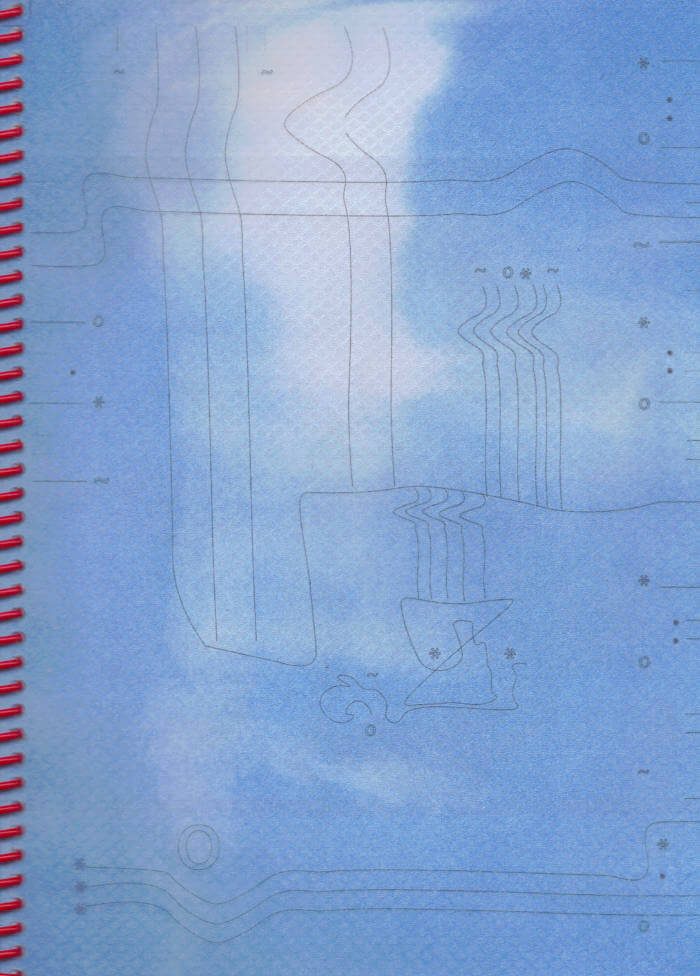
Under the Rainbow - Over the Weather
Speculative fiction magazine with contributions by 16 international (comic)artists/ writers/ designers/ curators/ witches. Exploring the world in the 4th millennium through images, words and dreamscapes.
Plastic coil bound with plastic covers.
Transparent cover with “A Short Manifesto” by Dutch conceptual artist Stanley Brouwn.
48 fold out pages, 185x262mm (foldes out to 185x365)
Riso printed on 100gr Munken Lynx by Hocus Bogus Publishing
Edition of 150
Cover design by Finn Melvin Caird
Design, layout and proofread by Yahaira Brito Morfe
Edited, printed and bound by Dennis Muñoz Espadiña
Language: English
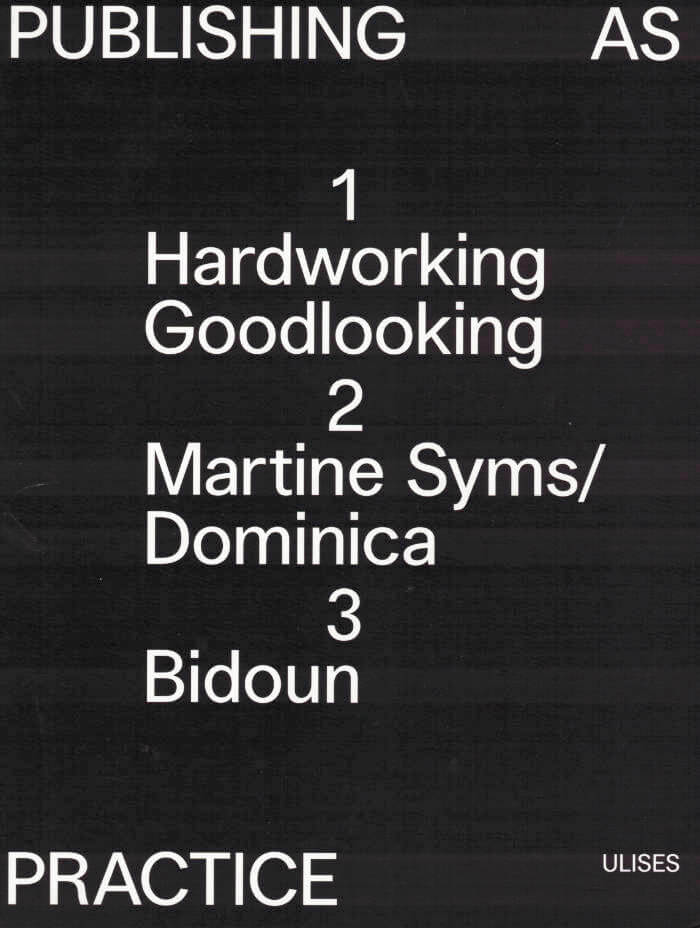
Publishing as Practice
Publishing as Practice centers on the work of three contemporary artists/book publishers who have developed fresh ways of broaching the political in publishing.
This book documents a residency program at Ulises—a curatorial platform based in Philadelphia—that explores publishing as an incubator for new forms of editorial, curatorial and artistic practice. Over the course of two years, three participants (Hardworking Goodlooking, Martine Syms/Dominica, and Bidoun) activated Ulises as an exhibition space and public programming hub, engaging the public through workshops, discussions, and projects.
Hardworking Goodlooking is a design and publishing imprint working primarily out of the Philippines. Dominica is an imprint run by artist Martine Syms dedicated to exploring Blackness as a topic, reference, marker, and audience in visual culture. Bidoun, a non-profit organization and magazine, focuses on art and culture from the Middle East and its diasporas. Each organization approached their residency at Ulises in a unique way, bringing a new understanding of what it means to practice publishing.
Edited by Kayla Romberger, Gee Wesley, Nerissa Cooney, Lauren Downing, and Ricky Yanas, Publishing as Practice features a preface by David Senior, Head of Library and Archives at the San Francisco Museum of Modern Art, and Ulises Carrión’s 1975 publishing manifesto “The New Art of Making Books.” Publishing as Practice also includes writing from Clara Balaguer, Hardworking Goodlooking, Martine Syms/Dominica, Bidoun, Lauren Downing, Kayla Romberger, and Gee Wesley alongside interviews, excerpts, and documentation from each residency.
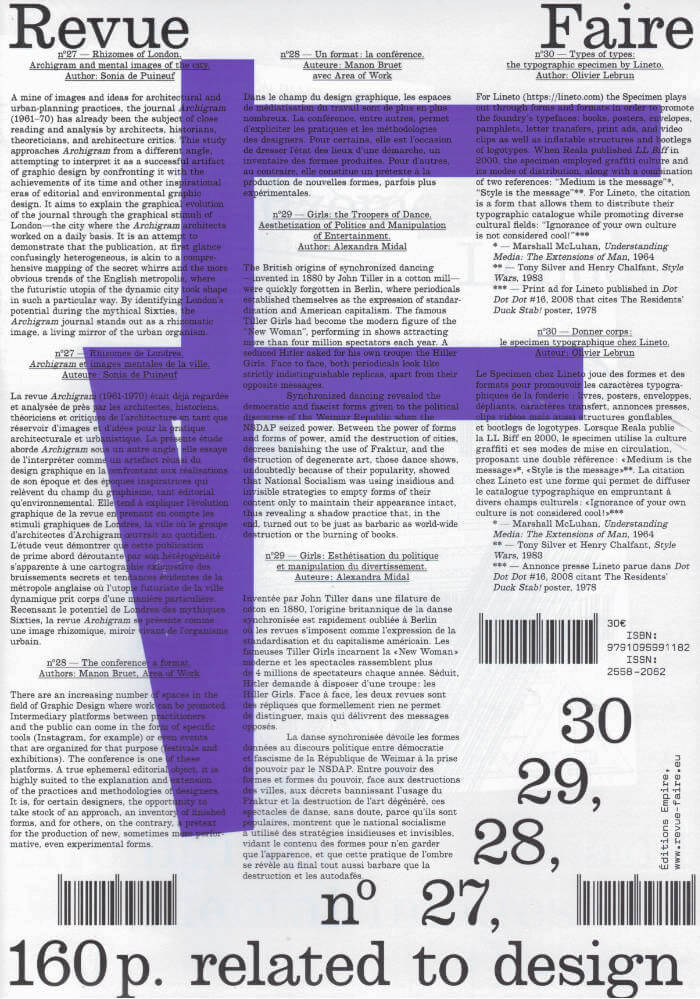
Revue Faire - Issues 27-30
Critical publications dedicated to the analysis of Graphic Design are sadly few and far between today, particularly in France, but also in Europe as a whole.
Adopting an analytical and critical posture with regard to the forms and activities of Graphic Design, Sacha Léopold and François Havegeer established in 2017 a printed publication that deals with these practices. The publication works with eight authors (Lise Brosseau, Manon Bruet, Thierry Chancogne, Céline Chazalviel, Jérôme Dupeyrat, Catherine Guiral, Étienne Hervy and Sarah Vadé).
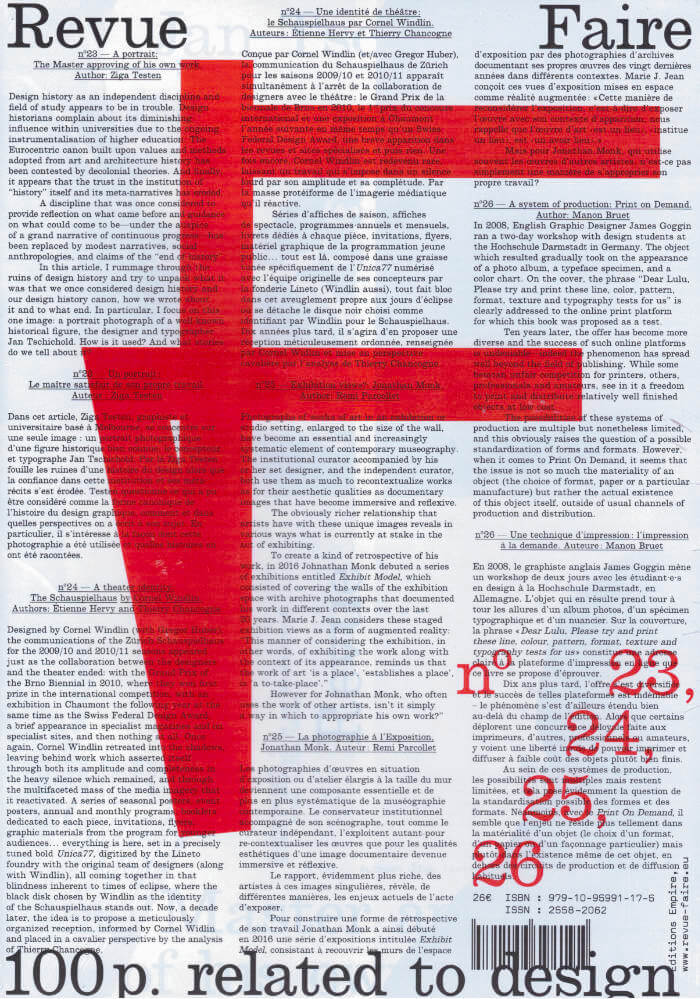
Revue Faire - Issues 23-26
Critical publications dedicated to the analysis of Graphic Design are sadly few and far between today, particularly in France, but also in Europe as a whole.
Adopting an analytical and critical posture with regard to the forms and activities of Graphic Design, Sacha Léopold and François Havegeer established in 2017 a printed publication that deals with these practices. The publication works with eight authors (Lise Brosseau, Manon Bruet, Thierry Chancogne, Céline Chazalviel, Jérôme Dupeyrat, Catherine Guiral, Étienne Hervy and Sarah Vadé).

Borrowing Positions
Borrowing Positions: Role-Playing Design & Architecture is a speculative book which reflects on the design- and architecture-centred LARPs (Live Action Role-Plays) organized by the Trojan Horse collective. The book is an exploration of Live Action Role-Play as a design and architecture research tool. By inviting the reader to try on different characters, switch roles and reconsider their everyday practices, the book explores issues such as identity, performativity, gender, colonialism, care responsibilities and fear in the context of architecture, design and urban planning.
The book consists of three parts: an overview of previous LARPs and their theoretical background; reflections (essays, visual essays and interviews) on LARP-related issues; and a practical (DIY) section – a step-by-step guide on how to organize your own design LARP.
Contributors to the book vary from architecture and design practitioners to performance artists working with role-play and fiction. The book will be of interest to anyone interested in inderdisciplinary practices in design and architecture.

Steve Paxton: Drafting Interior Techniques
This book was published on the occasion of the exhibition Steve Paxton / Drafting Interior Techniques, a retrospective exhibition, in Culturgest, Lisbon, March-July 2019, co-curated by Joao Fiadeiro and Romain Bigé.
American dancer, choreographer and improviser Steve Paxton (b. 1938) has continuously been shaping the face of dance for more than six decades. Starting his dance career in the 1950s, he danced with José Limon and the Cunningham company, contributed to found the Judson Dance Theater and post-modern dance, invented two dance techniques (Contact Improvisation and Material for the Spine), while writing extensively about movement (more than a hundred articles since 1970) and relentlessly performing improvisation around the world.
Drafting Interior Techniques is the first retrospective look taken at his work and legacy. It is built around one of Steve’s obsessive questions: what is my body doing when I am not conscious of it? This question is a mantra through the exhibition, which offers the visitors to wander into the dancer’s workshop, not only to see dance, but to look at movement with the eyes of a dancer.
Contributions: Delfim Sardo, Romain Bigé, João Fiadeiro, Julie Perrin, Daniel Lepkoff, Bojana Cvejić, Alice Godfroy, Nancy Stark Smith, Hubert Godard, André Lepecki Yvonne Rainer, Martin Nachbar, Ramsay Burt, Bebe Miller, Patricia Kuypers.
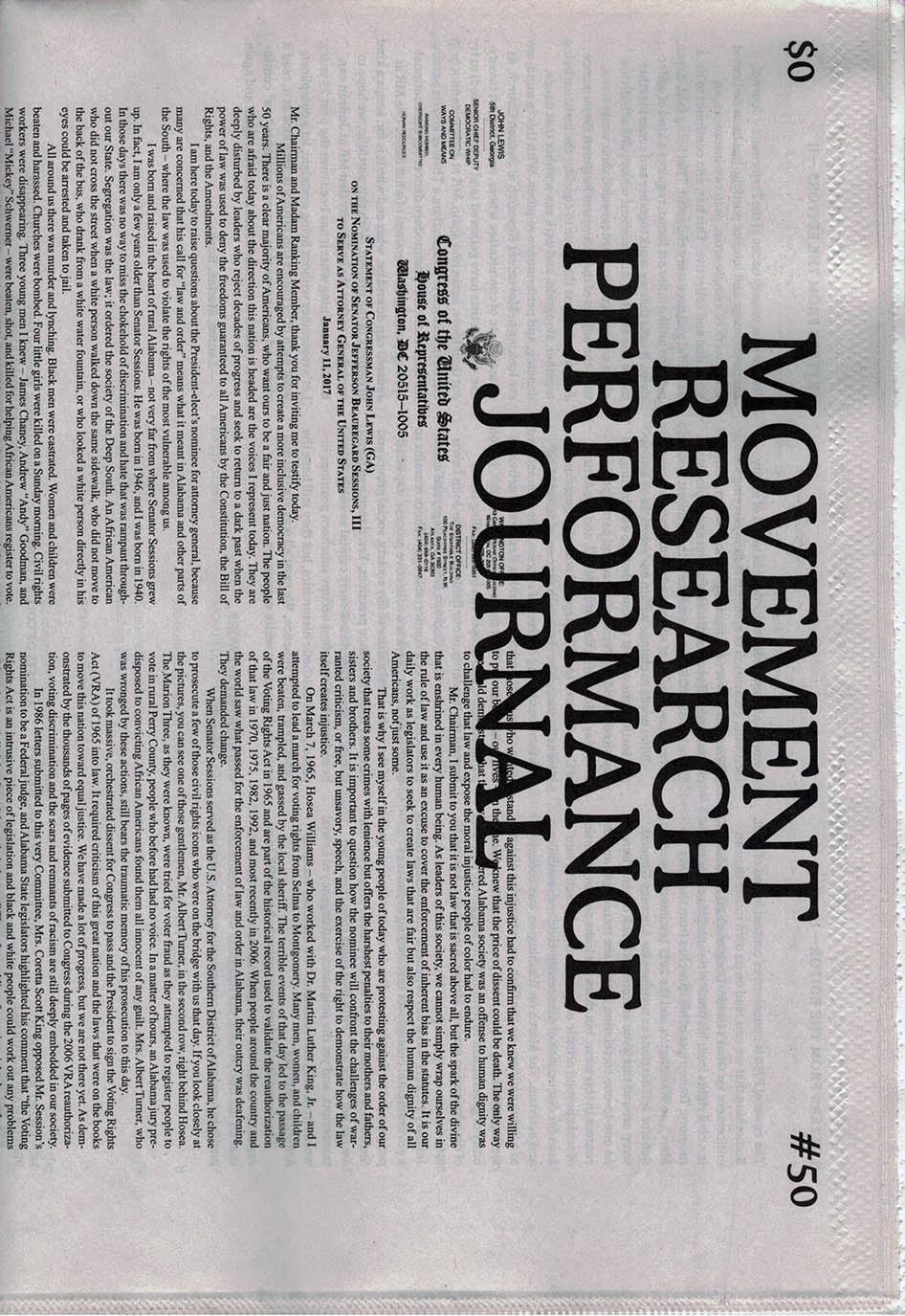
Movement Research Performance Journal
MRPJ - Archive Issues
Different archive editions of the journal available to consult in our space (not for sale). With editions ranging all through the history of the journal.
Available issues :
#03
#05
#14
#15
#19
#20
#22
#26
#50
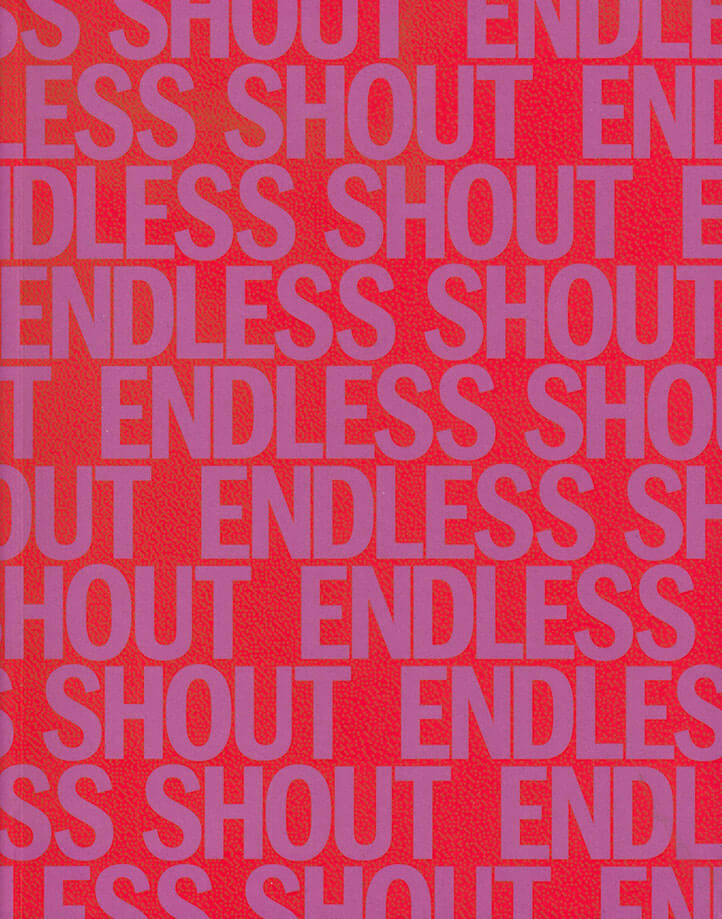
Endless Shout
Endless Shout asks how, why and where performance and improvisation can take place inside a museum.
The book documents a six-month series of experimental performances organized by the Institute of Contemporary Art, University of Pennsylvania, where five participants—Raúl de Nieves, Danielle Goldman, George Lewis, The Otolith Group and taisha paggett—collectively led a series of improvisation experiments. These include Miya Masaoka's A Line Becomes a Circle, which pays tribute to Shiki Masaoka, a subversive Japanese haiku writer; jumatatu m. poe and Jerome "Donte" Beacham's Let 'im Move You, addressing the history of J-Sette, a dance form popularized at historically black colleges; and A Recital for Terry Admins by composer George Lewis. The book includes an essay by curator Anthony Elms, conversations with Jennie C. Jones and Wadada Leo Smith on themes of rhythm, rehearsal and improvisation, plus new works created specifically for the book, such as a script by The Otolith Group on blackness and digital color correction.

Queer Direct
Queerdirect is an LGBTQI+ Artist support network, curatorial platform and arts programme. Initiated by Gaby Sahhar in 2017. Co-run With Lily Cheetah. Queerdirect hold regular events and curate exhibitions around London and provide queer artists with a platform and support. Queerdirect is the UK’s first contemporary arts platform and project space dedicated to queer arts.
This is the first edition, September 2019.
A5 perfect bound publication, 81 pp., published by Queerdirect & Camp Books and featuring 31 LGBTQIA+ artists working in and around London.

Midpoint Cafe
This book portrays a slice of the history of Midpoint Café and Bar in Brussels from 2011 until today, through interviews with one of its owners and a few of the regulars.
Midpoint is a book of interviews with Fatma Arar, Nick Bastis, Carles Congost, Gro Gravås, Jean-Paul Jacquet, Lars Laumann, Stefanie Snoeck, Harald Thys and Margot Vanheusden.
Edited by Laure Charles, Alberto García del Castillo, Louise Osieka and Marnie Slater.
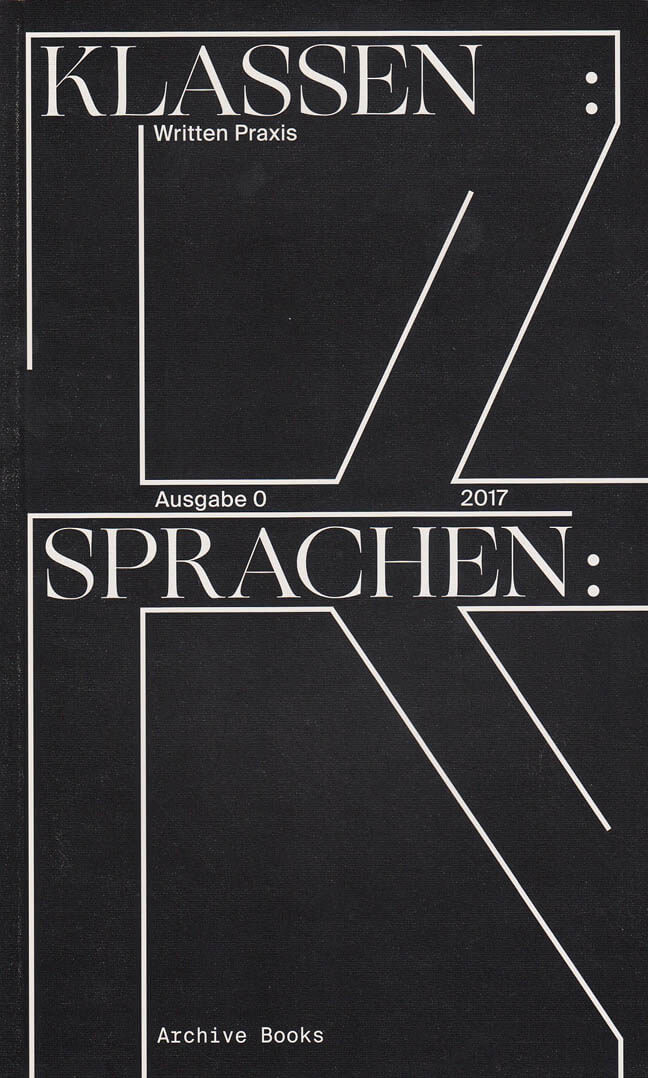
Klassen Sprachen/ Written Praxis
In dictionary entries, after its first appearance the discussed word is represented by its initial: class, class struggle, class contradiction as well as crisis, catastrophe, or colonialism become C. Our C (K in German) stands for Class Languages, and thus for the question of the verbalization, translation, and inscription of those political and social conflicts that determine our contemporary moment. Instead of passing off art as a model for a better politics, we wish to test it for the signatures, the markers and forms of these deeply antagonistic relations of which art itself is a material part: we are concerned with art as a class language, as well as with class languages in art; with art’s room for maneuver as well as with its limits and restrictions, curatorially, in writing and debate.

Belladonna Chaplets 2018
241. Laura Buccieri: Songbook for a Boy Inside
240. K. Lorraine Graham: from Feed
239. Marta López-Luaces: Reminiscences of Echoes
238. Montana Ray: Mirroring
237. Yumi Dineen Shiroma: A Novel Depicting “The” “Asian” “American” “Experience”
236. Anaïs Duplan: 9 Poems/The Lovers
235. Serena J. Fox: Night Landing
234. Orchid Tierney: Blue Doors
233. Aditi Machado: This Touch
232. Iman Mersal: الصوت في غير مكانه (The Displaced Voice); translated by Lisa White
231. Abdellah Taïa: 99 Names
230. Javier Zamora: Revising into the Right? Form…Hopefully?
229. Aracelis Girmay: MOTHER MOTHER YOU ARE WHO I LOVE
228. Christina Barreiro, Lindsey Hoover, Fatima Lundy, Rupert McCranor, Kayla Park, Chrissy Ramkarran, Asiya Wadud, Rachael Guynn Wilson: Out-Of-Office
227. Baseera Khan: Be Careful What You Wish
226. Maryam Monalisa Gharavi: Alphabet of an Unknown City
225. Göksu Kunak: I thought this would
Please specify which edition you would like. You can reach out to confirm availability of specific chaplets.